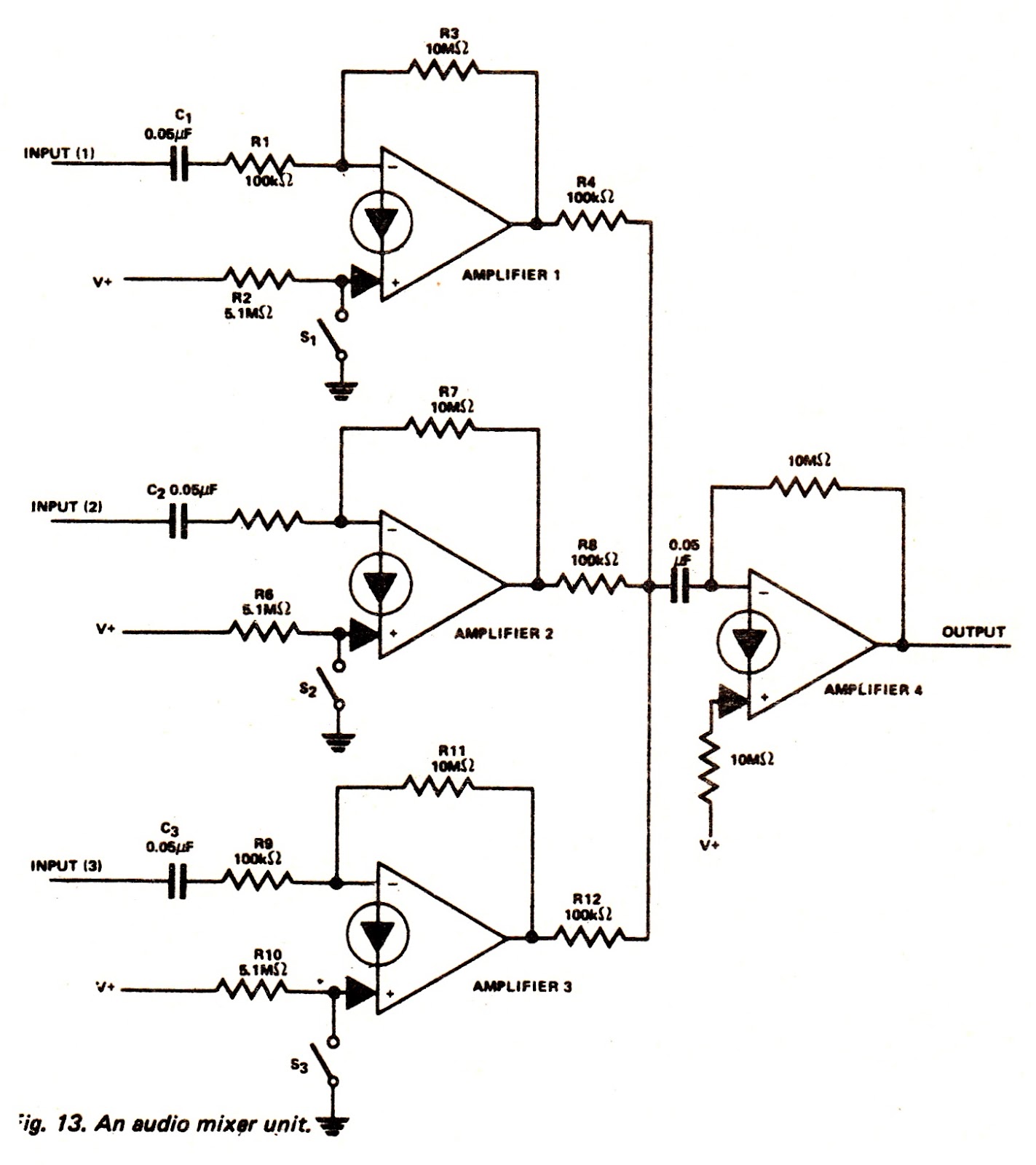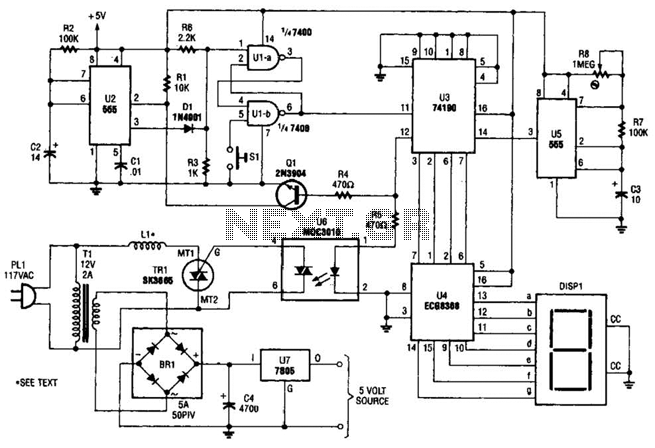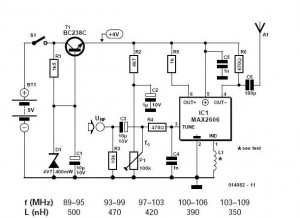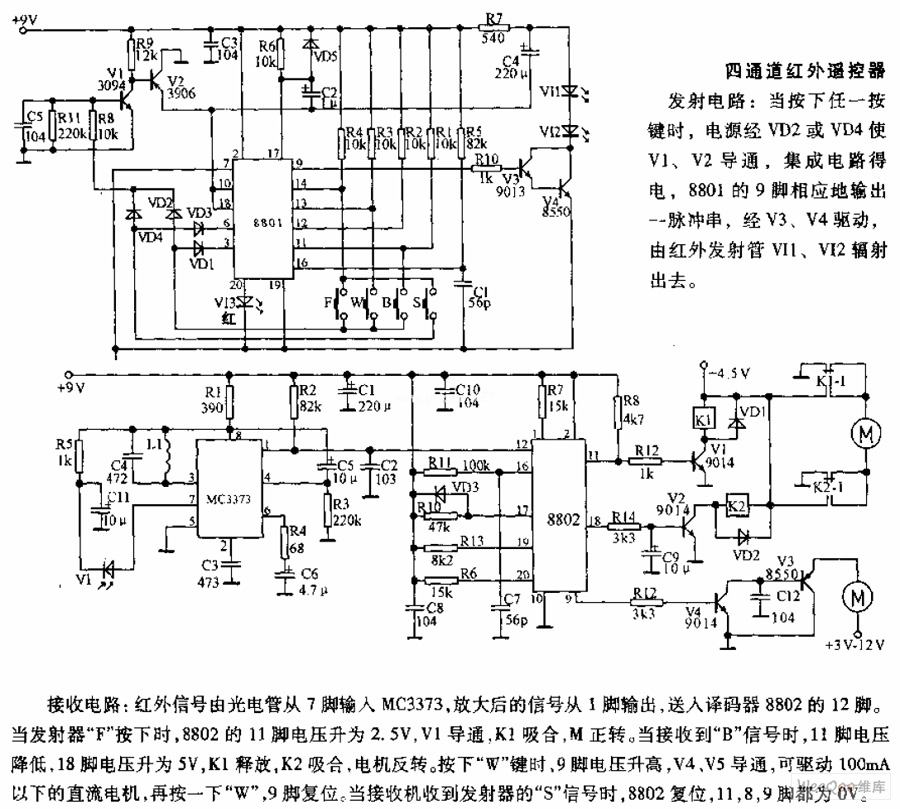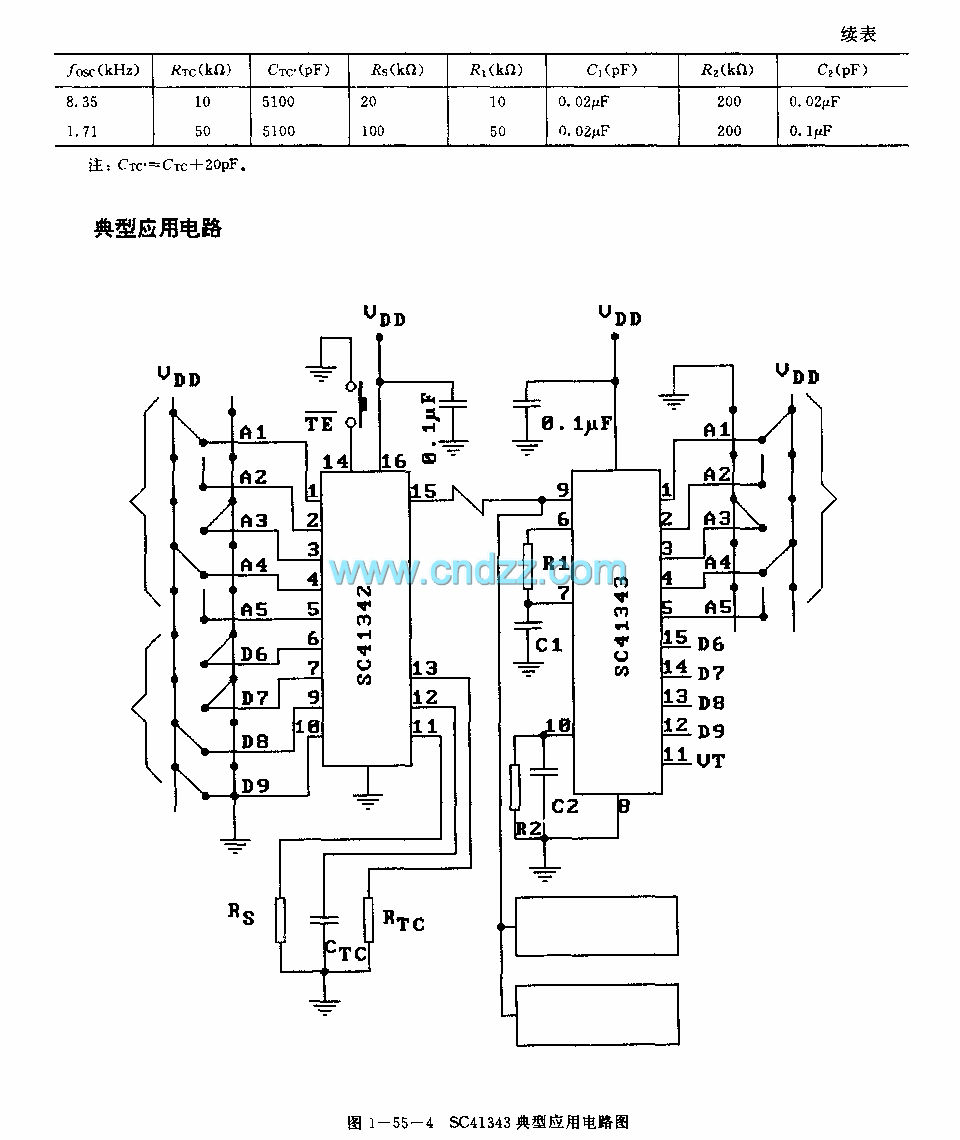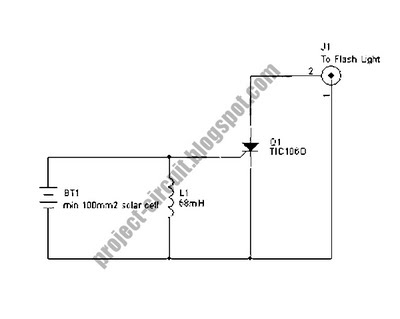
15db uhf tv antenna booster circuit

This circuit is designed for a UHF TV antenna and provides a 15 dB preamplification. It is constructed using a transistor and minimal components. The schematic features the BF180 UHF transistor. The first stage consists of a band-pass filter created with components C1, CV1, L1, L4, C7, and C3. The second stage acts as a base-common voltage amplifier with low input impedance for proper matching. The inductors L1 to L4 should be built as air-core coils to achieve a high Q-factor. After assembly, the circuit should be enclosed in a suitable metallic box, ensuring that the circuit's ground is connected to the box to minimize noise interference.
This UHF TV antenna circuit operates by amplifying weak signals received by the antenna, enhancing the overall signal quality for better reception. The circuit's design incorporates a band-pass filter in the first stage, which selectively allows frequencies within a certain range while attenuating out-of-band signals. This helps to improve the signal-to-noise ratio by filtering out unwanted frequencies that could degrade performance.
The components C1, CV1, L1, L4, C7, and C3 are strategically chosen to define the filter's characteristics, such as its center frequency and bandwidth. The air-core coils (L1 to L4) are essential for maintaining a high Q-factor, which is a measure of the filter's selectivity and efficiency. A higher Q-factor indicates that the circuit can more effectively resonate at the desired frequency while rejecting others.
The second stage of the circuit utilizes a base-common voltage amplifier configuration. This configuration is known for its low input impedance, which is beneficial for matching with the output of the band-pass filter. Proper impedance matching is crucial for maximizing power transfer and minimizing reflections that can lead to signal loss.
After the circuit is assembled, it is important to place it inside a metallic enclosure. This not only protects the circuit from physical damage but also shields it from electromagnetic interference (EMI) that could affect performance. By connecting the circuit's ground to the metallic box, any noise picked up by the circuit can be effectively grounded, further enhancing the signal integrity.
Overall, this UHF TV antenna circuit design emphasizes simplicity and efficiency while ensuring optimal performance through careful component selection and layout.This is a circuit for antenna UHF TV that can be give 15dB preamp. This circuit is built by transistor and low components. This is the figure of the circuit. The circuit above is formed based on BF180 UHF Transistor. The first stage is a band pass filter constructed by the C1, CV1, L1, L4, C7 and C3, the second stage is a base-common voltage ampli fier with low input impedance to match. Build the L1 ~ L4 as air core coil to obtain high Q-Factor. After assembling, pack it into a proper metallic box and connect the ground of the circuit to the box to reduce noise effect. 🔗 External reference
This UHF TV antenna circuit operates by amplifying weak signals received by the antenna, enhancing the overall signal quality for better reception. The circuit's design incorporates a band-pass filter in the first stage, which selectively allows frequencies within a certain range while attenuating out-of-band signals. This helps to improve the signal-to-noise ratio by filtering out unwanted frequencies that could degrade performance.
The components C1, CV1, L1, L4, C7, and C3 are strategically chosen to define the filter's characteristics, such as its center frequency and bandwidth. The air-core coils (L1 to L4) are essential for maintaining a high Q-factor, which is a measure of the filter's selectivity and efficiency. A higher Q-factor indicates that the circuit can more effectively resonate at the desired frequency while rejecting others.
The second stage of the circuit utilizes a base-common voltage amplifier configuration. This configuration is known for its low input impedance, which is beneficial for matching with the output of the band-pass filter. Proper impedance matching is crucial for maximizing power transfer and minimizing reflections that can lead to signal loss.
After the circuit is assembled, it is important to place it inside a metallic enclosure. This not only protects the circuit from physical damage but also shields it from electromagnetic interference (EMI) that could affect performance. By connecting the circuit's ground to the metallic box, any noise picked up by the circuit can be effectively grounded, further enhancing the signal integrity.
Overall, this UHF TV antenna circuit design emphasizes simplicity and efficiency while ensuring optimal performance through careful component selection and layout.This is a circuit for antenna UHF TV that can be give 15dB preamp. This circuit is built by transistor and low components. This is the figure of the circuit. The circuit above is formed based on BF180 UHF Transistor. The first stage is a band pass filter constructed by the C1, CV1, L1, L4, C7 and C3, the second stage is a base-common voltage ampli fier with low input impedance to match. Build the L1 ~ L4 as air core coil to obtain high Q-Factor. After assembling, pack it into a proper metallic box and connect the ground of the circuit to the box to reduce noise effect. 🔗 External reference
